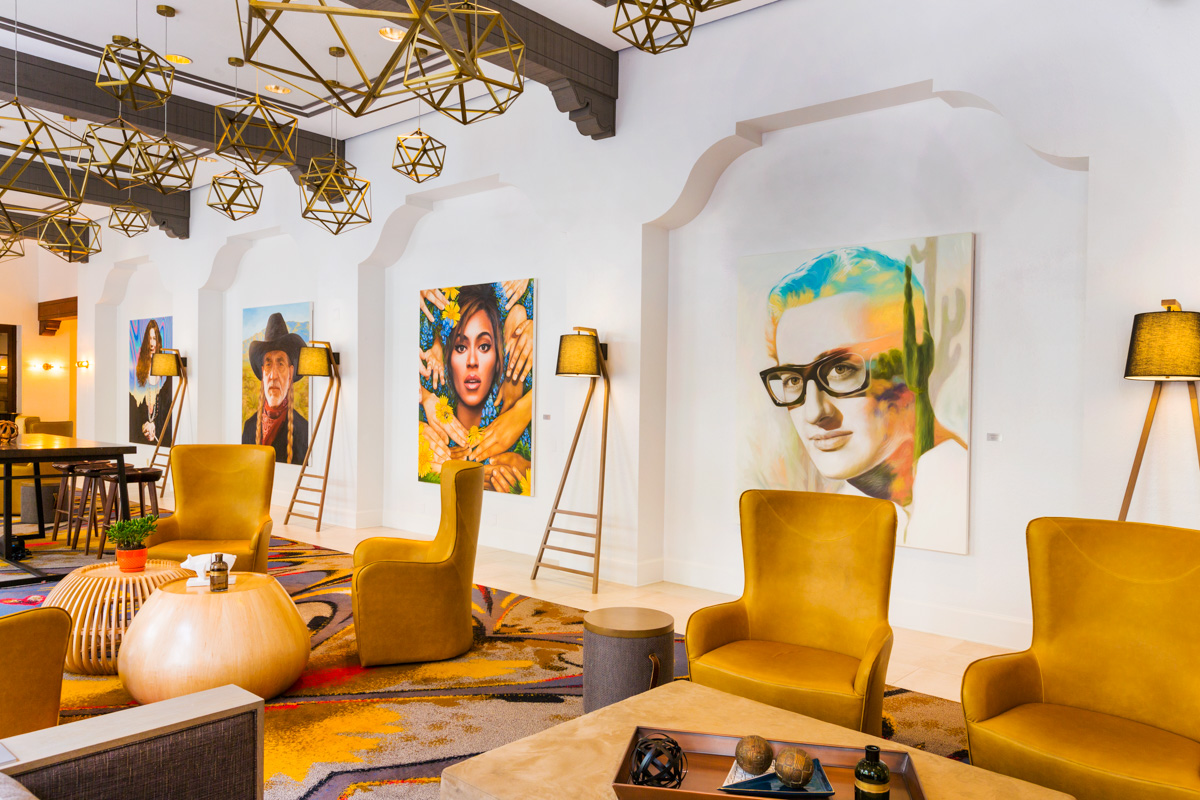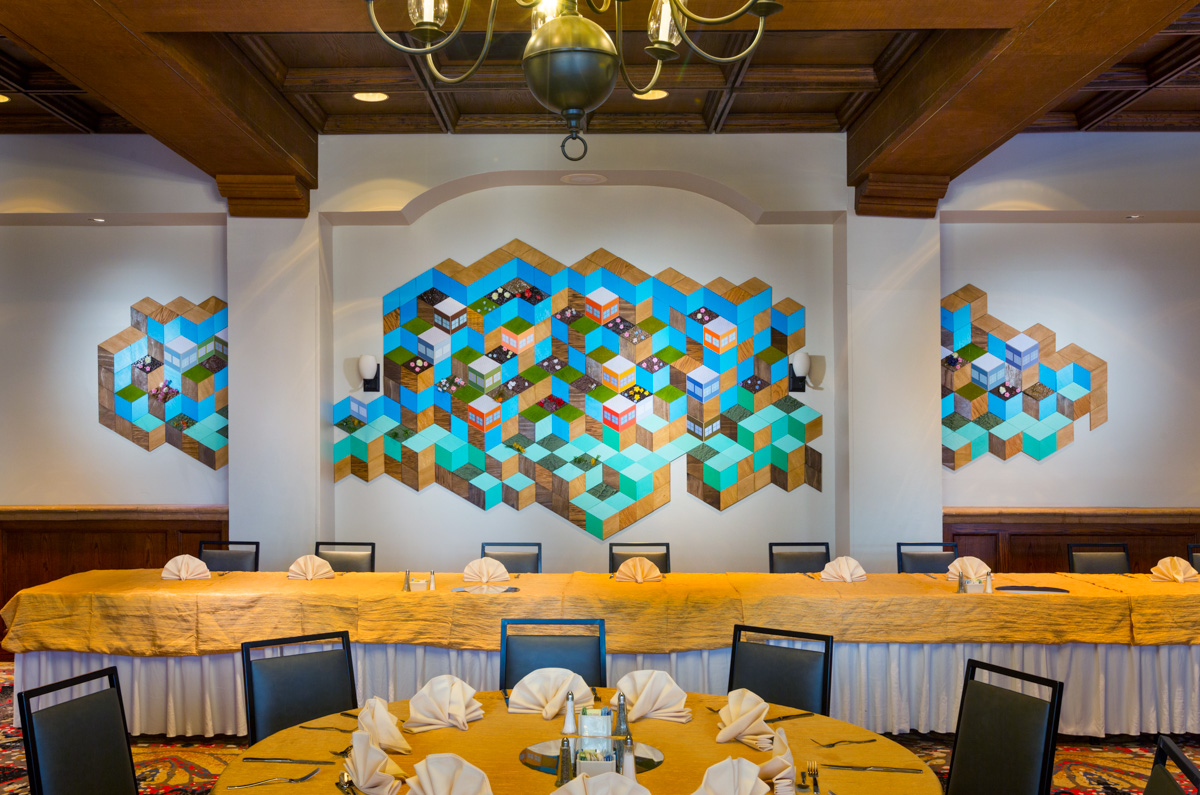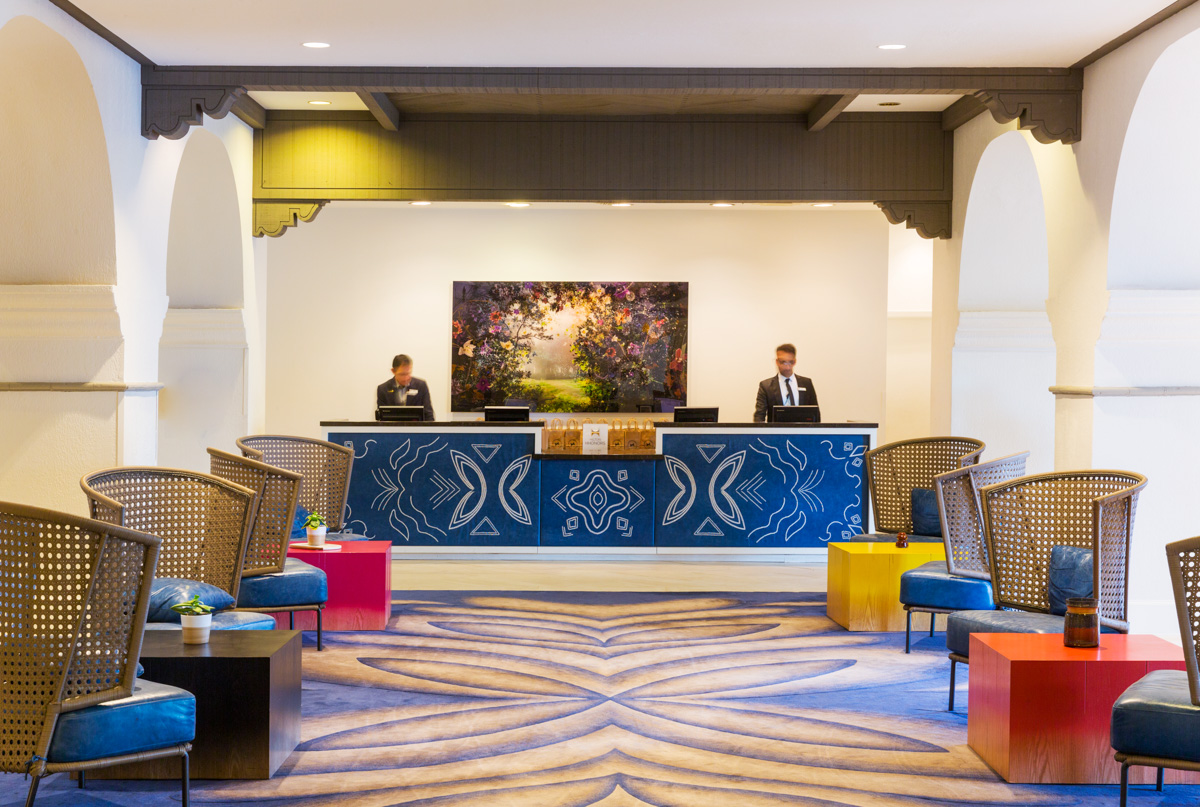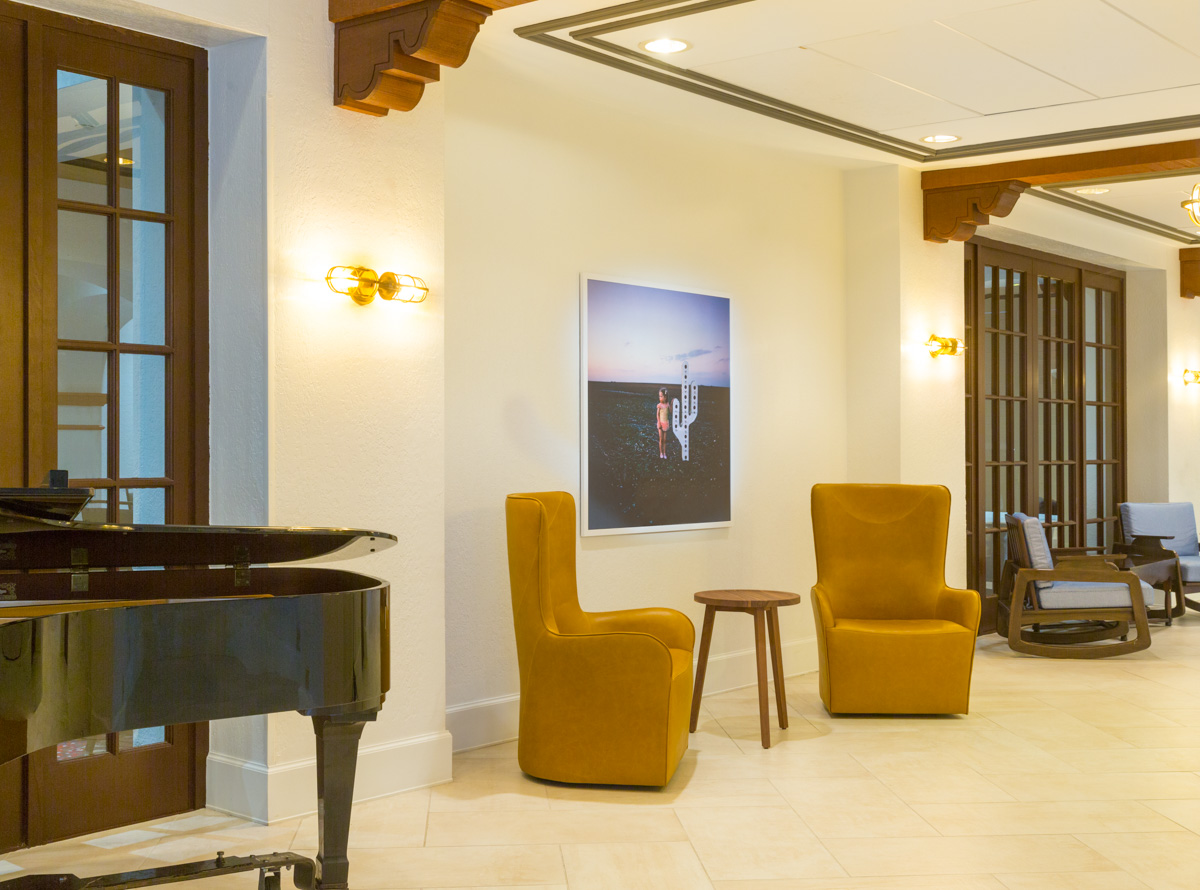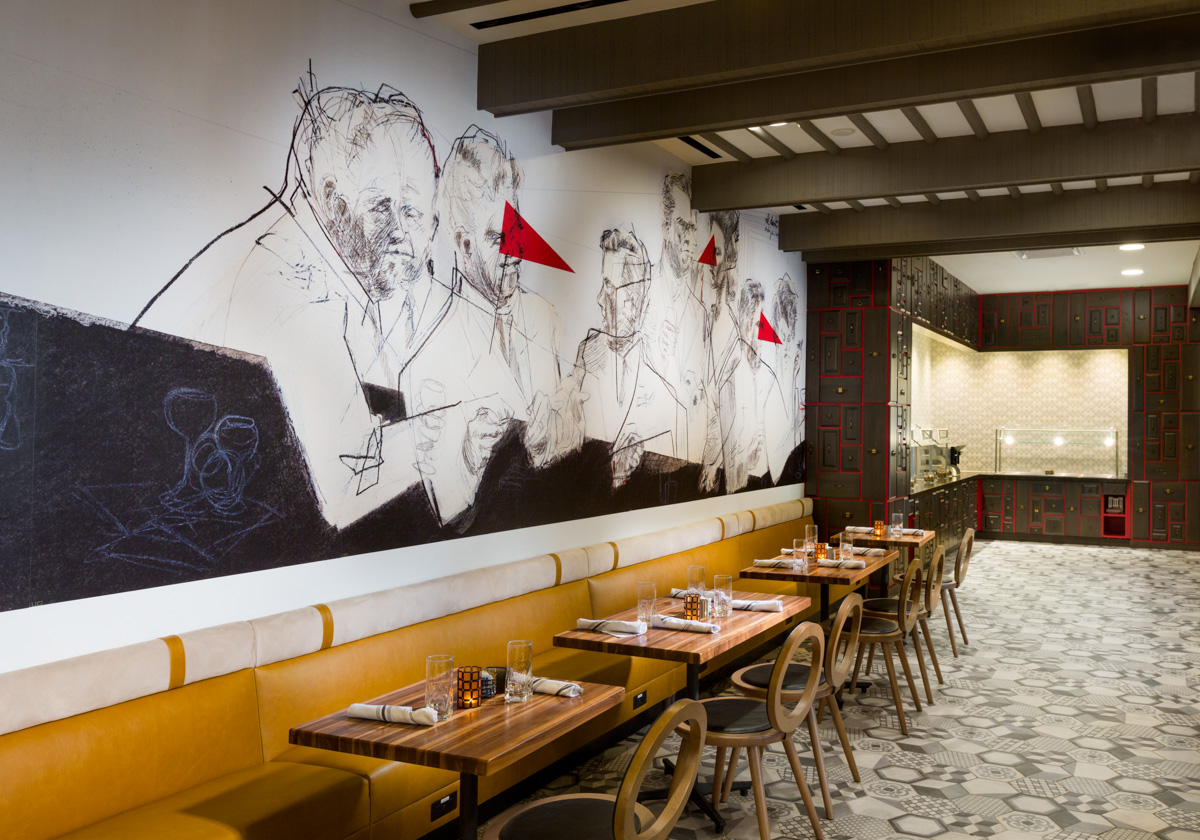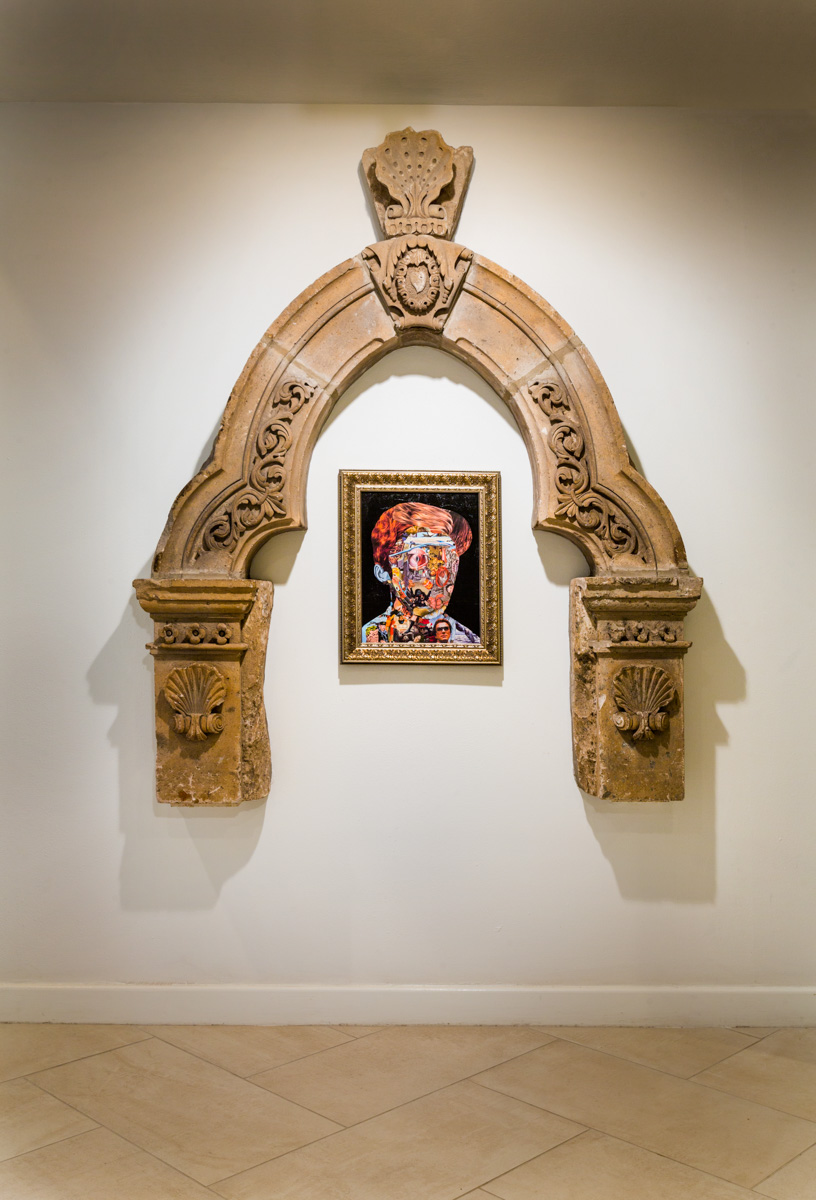NINE dot ARTS Takes Austin
At the recent Austin State of the Market event hosted by Bisnow, NINE dot ARTS joined real estate and business professionals to unpack Austin’s incredible advancement – now the 2nd fastest growing city in the US. From developing new infrastructure to preserving the city’s culture, the implications for Austin’s growth mirror those of other Sun Belt cities, where low costs of living have spurred widespread migration from West Coast and Northeast hotspots. Explore highlights from the event below.
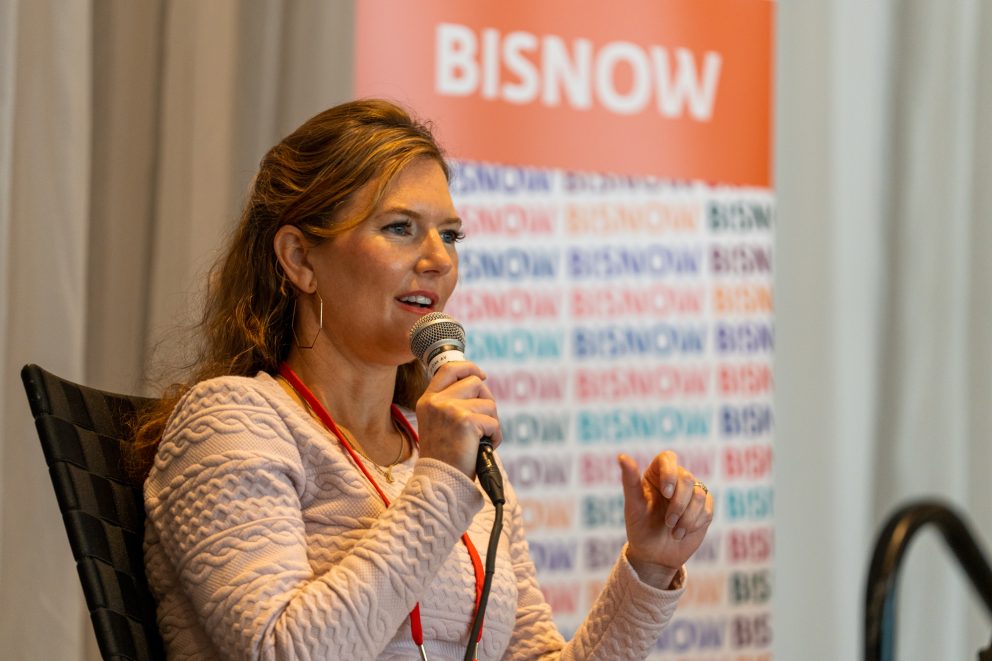
Achieving a Competitive Advantage
Nowadays, there is more to real estate than just location for value appreciation. Especially in accelerating markets like Austin, developers have to get creative about setting themselves apart.
Fortunately, art and culture can give developments a leg-up in an increasingly competitive marketplace. A high-impact, hyperlocal art experience can generate goodwill and good press for a property, attract and retain tenants and guests, and distinguish the destination from the masses. Plus, employing local artists and creative labor in planning and development can:
- Add authenticity and meaning to a project,
- Build social and cultural capital, and
- Spark workforce development, continuous innovation, and competitive advantage.
Such qualities are sure to both differentiate individual properties and set Austin as a whole apart from other growing cities. After all, places with an active arts and cultural sector are also shown to have a stronger, more resilient economy – both of which will be needed to support Austin’s advancement.
The art collection at the DoubleTree Austin features primarily local artists and was inspired by the city’s active arts and cultural scene.
Trends in Mixed-Use, Amenity-Rich Neighborhoods
After attending Bisnow events in Atlanta, Seattle, San Francisco, Nashville, and elsewhere, one trend has gained significant attention across markets: Mixed-use environments with accessible amenities. And the same is true in Austin.
Multipurpose social spaces centered on inclusive design can impact economic velocity and uplift neighborhoods as a whole. Why? Because nothing is developed in a silo. Multifamily apartments, retail, public space, and more are merging together under the “mixed-use” umbrella, creating a need for interconnected neighborhoods where people can easily meet, gather, and explore. Also a key topic at the Nashville State of the Market event, access to such neighborhood amenities is a popular trend for growing cities where residents old and new will live, work, play, and shop amongst each other while enjoying the convenience, comfort, and character of their city.
But with such rapid development and population growth, what will become of Austin’s character? That’s where art and culture come in.
Preserving & Progressing Austin’s Identity
As powerful creative placemaking (and placekeeping) tools, art and culture can be used to:
- Communicate across demographic and socioeconomic lines,
- Identify and amplify existing cultural assets,
- Inform and inspire long-term community visioning,
- Engage the public more authentically in planning and development,
- Promote the stewardship of a place, and – perhaps most importantly for Austin –
- Preserve, honor, challenge, and invent community identity.
Such strategies are at the heart of creative placemaking, or infusing art, culture, and community engagement into decision-making and development processes. Creative placemaking will be vital as people aim to fulfill the 2000s era slogan, “Keep Austin Weird” (born from the city’s first signs of rapid growth and urban renewal), yet also embrace the progression, diversity, and tolerance that the city prides itself on. Ultimately, creative placemaking can be used to reconcile Austin’s rapid development with its original character, guiding its evolution as the next great urban destination.
Revitalizing Austin’s 6th Street
NINE dot ARTS is putting such strategies to use in our community art plan for the redevelopment of Austin’s iconic 6th Street, formerly known as Pecan Street. This 9-block historic entertainment district is home to several minority-owned businesses, old Victorian architecture, and diverse cultural activities – from live music and film festivals to massive biker rallies. Yet policies from the 1928 Austin City Plan have left major impacts on the street, creating a divide between the majority-white central city and the majority-black east, where many were forced to move as a result.
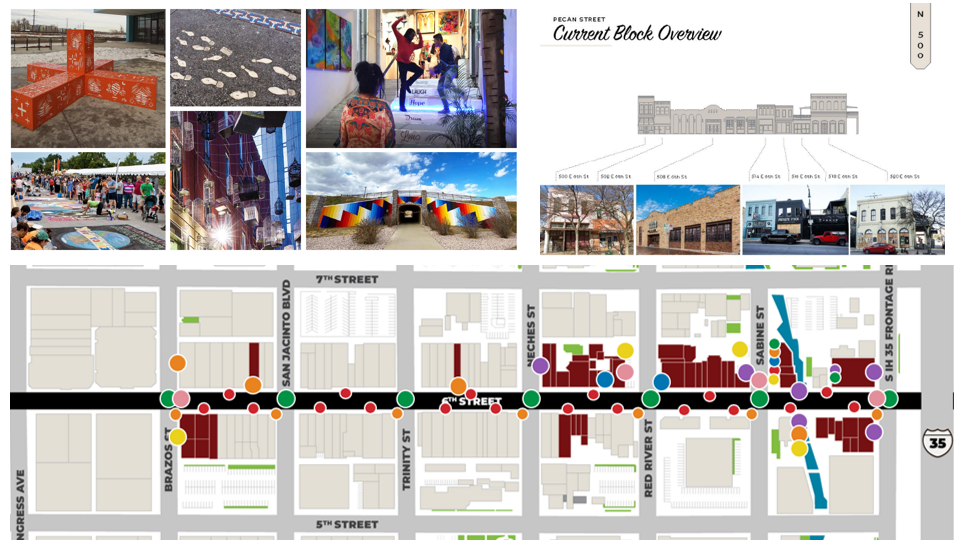
Imagery from the Community Art Plan for 6th Street in Austin
In its current state, the streetscape and its buildings are in dire need of repair, serving as a dilapidated backdrop compounding challenges related to crime, violence, and homelessness. Yet our partners at the Austin-based Stream Realty Partners are working to change this.
In a massive endeavor to revitalize 6th Street, Stream brought our team on to develop an art and culture plan that would honor the history of the area while shaping its future, transforming its reputation from the “Dirty 6th” to a multigenerational destination and a safe haven for arts and culture.
Learn more about 6th Street’s redevelopment here and stay tuned for updates on NINE dot ARTS’ community art plan for the project.
